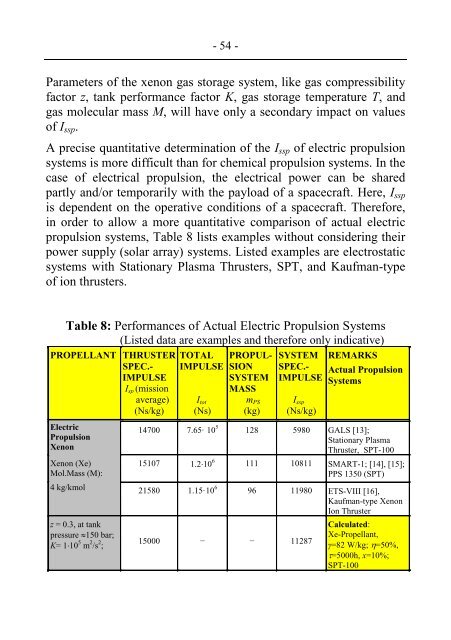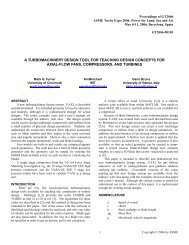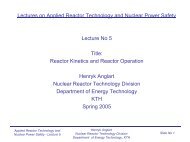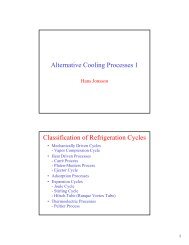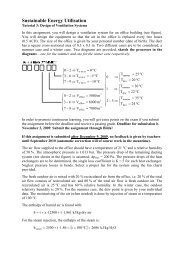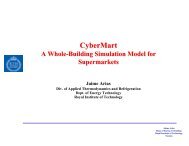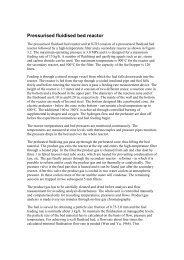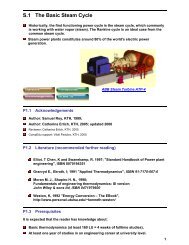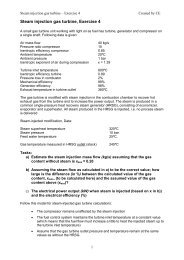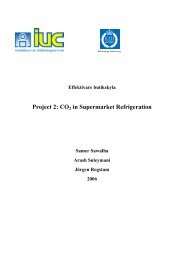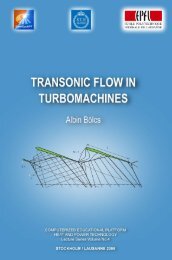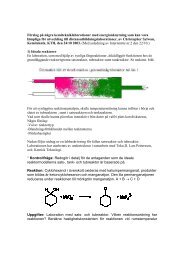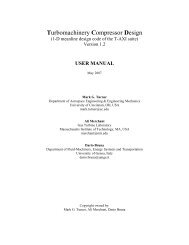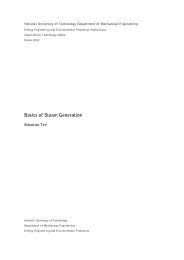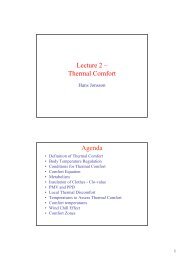SPACECRAFT PROPULSION - KTH
SPACECRAFT PROPULSION - KTH
SPACECRAFT PROPULSION - KTH
- No tags were found...
Create successful ePaper yourself
Turn your PDF publications into a flip-book with our unique Google optimized e-Paper software.
- 54 -Parameters of the xenon gas storage system, like gas compressibilityfactor z, tank performance factor K, gas storage temperature T, andgas molecular mass M, will have only a secondary impact on valuesof I ssp .A precise quantitative determination of the I ssp of electric propulsionsystems is more difficult than for chemical propulsion systems. In thecase of electrical propulsion, the electrical power can be sharedpartly and/or temporarily with the payload of a spacecraft. Here, I sspis dependent on the operative conditions of a spacecraft. Therefore,in order to allow a more quantitative comparison of actual electricpropulsion systems, Table 8 lists examples without considering theirpower supply (solar array) systems. Listed examples are electrostaticsystems with Stationary Plasma Thrusters, SPT, and Kaufman-typeof ion thrusters.Table 8: Performances of Actual Electric Propulsion Systems(Listed data are examples and therefore only indicative)PROPELLANT THRUSTERSPEC.-IMPULSEI sp (missionaverage)(Ns/kg)TOTALIMPULSEI tot(Ns)PROPUL-SIONSYSTEMMASSm PS(kg)SYSTEMSPEC.-IMPULSEI ssp(Ns/kg)REMARKSActual PropulsionSystemsElectricPropulsionXenonXenon (Xe)Mol.Mass (M):14700 7.65· 10 5 128 5980 GALS [13];Stationary PlasmaThruster, SPT-10015107 1.210 6 111 10811 SMART-1; 14, 15;PPS 1350 (SPT)4 kg/kmol 21580 1.15·10 6 96 11980 ETS-VIII 16,Kaufman-type XenonIon Thrusterz = 0.3, at tankpressure 150 bar;K= 110 5 m 2 /s 2 ;15000 − − 11287Calculated:Xe-Propellant,γ=82 W/kg; =50%,=5000h, x=10%;SPT-100


